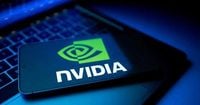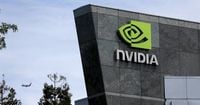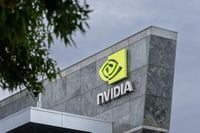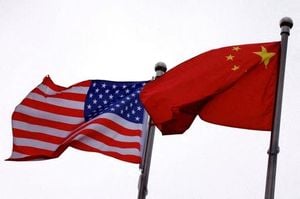On October 29, 2025, Nvidia achieved a feat that would have seemed like science fiction just a few years ago: the Silicon Valley chipmaker became the world’s first publicly traded company to reach a staggering $5 trillion market capitalization. The news, confirmed by AP and echoed across financial media, sent shockwaves through the tech and investment worlds—further fueling a frenzy over artificial intelligence that’s been compared to the most transformative moments in modern technology.
It’s not just a number. Nvidia’s $5.03 trillion valuation, with shares closing at $207.04 and 24.3 billion shares outstanding, now exceeds the gross domestic product of India, Japan, and the United Kingdom, according to the International Monetary Fund. In fact, as NBC News pointed out, only the United States and China boast economies larger than Nvidia’s new market cap. The company’s rise has been nothing short of meteoric: three months ago, Nvidia crossed the $4 trillion threshold, and just over two years ago, it was worth $1 trillion.
What’s behind this breakneck ascent? The answer, in a word, is AI. Nvidia carved out its initial niche by developing graphics processing units (GPUs) for video games. But it was the pivot to artificial intelligence—specifically, tailoring those GPUs for training and running powerful AI systems like ChatGPT—that set the stage for its current dominance. As AI chatbots and image generators exploded in popularity, demand for Nvidia’s chips skyrocketed. Tech giants and startups alike scrambled for access, creating a modern-day gold rush for the company’s hardware.
This week, CEO Jensen Huang was in South Korea for the Asia-Pacific Economic Cooperation summit, an event that drew leaders from the United States, China, Japan, and other Pacific Rim nations. But as AP highlighted, the summit’s main stage was almost upstaged by the drama unfolding on its sidelines: a highly anticipated meeting between President Donald Trump and Chinese President Xi Jinping, with Nvidia’s technology at the center of the agenda. Trump made it clear he intended to discuss Nvidia’s chips, especially the much-hyped Blackwell AI chip, with Xi during their face-to-face meeting.
The Blackwell chip, described by Trump as “super duper,” is Nvidia’s most advanced AI processor to date. Sales to China have been restricted over fears that Beijing could gain a strategic edge—an anxiety that’s colored U.S. tech policy for years. In July, Commerce Secretary Howard Lutnick told CNBC, “We don’t sell them our best stuff, not our second-best stuff, not even our third best.” But, he added, selling China America’s “fourth best” AI technology was “cool” with the administration. The Trump administration’s stance on AI chip exports has fluctuated, reflecting both national security concerns and the immense commercial stakes involved.
Jensen Huang, meanwhile, has become a kind of diplomatic shuttle, spending much of 2025 traveling between Washington and Beijing. According to The New York Times, Huang has emerged as a key intermediary, working to balance U.S. trade policy with the global appetite for Nvidia’s chips. “Nvidia works with governments across the world,” company spokesman John Rizzo told the paper. “We do not engage in geopolitical or diplomatic discussions between governments.” Still, the company’s influence is undeniable. President Trump, for his part, has made Nvidia’s chips a focal point of U.S. trade strategy, striking deals to supply AI hardware to the United Arab Emirates, Saudi Arabia, South Korea, and Japan.
Nvidia’s business moves have only added to its momentum. At the company’s annual AI conference in Washington, D.C., Huang announced a slew of new partnerships and investments: a $1 billion investment in Nokia to collaborate on 6G technology, a partnership with Uber to develop robotaxis, and a collaboration with the U.S. Department of Energy to build seven new AI supercomputers. Perhaps most eye-popping was the disclosure of $500 billion in chip orders, with 20 million of the newest chips slated for delivery through the end of next year. In September, Nvidia also committed $100 billion to OpenAI, aiming to add at least 10 gigawatts of AI data centers—further boosting the computing power behind ChatGPT and similar platforms.
It’s not just about new markets and partnerships. Nvidia has also thrown its weight behind struggling U.S. chipmaker Intel, announcing a $5 billion investment and plans for collaboration. The U.S. government, in parallel, took a 10% stake in Intel worth around $11 billion. These moves, according to AP, illustrate the growing strategic importance of semiconductor manufacturing for both economic and national security reasons.
But for all the excitement, there are clouds on the horizon. The Bank of England and the International Monetary Fund have both warned that tech stock prices—pumped up by the AI boom—could be approaching bubble territory. “There’s unbridled optimism about where this technology is going to go,” Gene Munster of Deepwater Asset Management told The New York Times. “But the question is: Will it deliver? The usefulness of A.I. is still limited today.”
Jensen Huang, for his part, has pushed back on the bubble narrative. Speaking to NBC News, he insisted, “These companies are generating real revenues,” and the products they are selling are “profitable.” At Nvidia’s recent conference, he went further, calling AI as essential to the future as electricity and the internet. “Every company will use it,” he declared in his trademark black leather jacket. “Every nation will build it.”
The numbers are hard to argue with. Nvidia’s stock has gained more than 50% in 2025 and over 1,500% in the last five years. The S&P 500, by comparison, has risen just 17% this year. Nvidia now makes up over 8% of the S&P 500 index, more than any single company in decades. Its AI chips account for more than 90% of the market, making competitors like AMD, Intel, Broadcom, and others seem almost minor by comparison.
Spending on data centers filled with Nvidia chips accounted for a staggering 92% of U.S. GDP growth in the first half of 2025, according to Harvard economist Jason Furman. Without that surge, the American economy would have barely grown at all. Tech giants like Microsoft and Oracle are pouring hundreds of billions into new infrastructure, with Morgan Stanley projecting that total spending will top $549 billion this year—more than double the amount in 2023.
Still, some investors and analysts remain cautious, pointing out that the true productivity gains from AI have yet to fully materialize. “We’re still really, really early in this process,” Bob O’Donnell, president of TECHnalysis Research, told The New York Times. “Converting those examples that have shown promise into something that changes how people work is taking much longer than people have expected.”
Yet, for now, the story of Nvidia is one of audacious bets paying off—at least so far. From video game graphics to the engine room of the global AI revolution, Nvidia’s journey to $5 trillion is a testament to the power of innovation and the unpredictable ways technology can reshape the world. Whether this boom will last, or if the skeptics will be proven right, is a question only time—and perhaps the next generation of AI—can answer.






